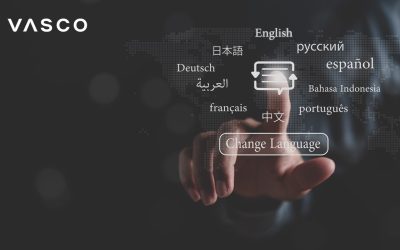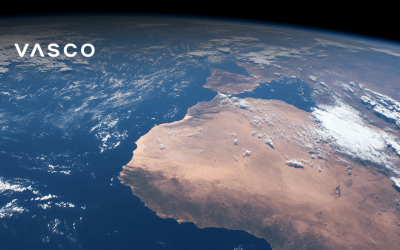In the cinematic masterpiece, Avatar, director James Cameron transported audiences to the lush and vibrant moon of Pandora, where the indigenous people known as the Na’vi live. But, what language do the Na’vi speak? Is Na’vi a language or is it the name of the people who speak it?
Central to the film’s immersive experience is the tongue called simply the Na’vi language. It is a unique and fictional creation that adds depth to the cultural tapestry of Pandora.
In this article, we’ll explore the intricacies of this constructed language, its development, and the tools available for fans to delve deeper into this linguistic marvel.
This Avatar language is rich and vibrant. To learn more about it, here are the topics we’re going to discuss:
- What is the Na’vi language?
- How was the Na’vi language created?
- Who created the Na’vi language?
- What is the Na’vi language based on?
- Is Na’vi a full language?
- The Na’vi language characteristics.
- How to learn the Na’vi language?
- Is Na’vi a real language?
- What are some Na’vi language phrases?
Table of Contents:
The Birth of Na’vi – Avatar Language
The language spoken by the Na’vi people stand out as a remarkable linguistic creation. But who created the Na’vi language? And how was the Na’vi language created?
This fictional tongue was meticulously developed by the esteemed linguist Paul Frommer.
Professor emeritus at the University of Southern California and possessing a profound background in linguistics, Frommer was approached by acclaimed filmmaker James Cameron to undertake the task of crafting a new language that would serve as the native tongue for the fictional Na’vi people within the 2009 blockbuster hit, Avatar.
FAQ:
What is the language in Avatar called?
What language does Na’vi speak?
Can you actually learn the Na’vi language?
How do you say hello in the Na’vi language?
How do I say “I love you” in the Na’vi language?
What language is the Na’vi language based on?

Authentic language
Frommer’s linguistic prowess proved instrumental in the creation of a language that not only sounded authentic but also exuded cultural richness, seamlessly integrating into the immersive world of Pandora. Its authenticity even brings to mind the fictional languages created by J.R.R Tolkien for the Lord of The Rings books.
James Cameron’s vision for a distinct and fully realized linguistic system found its realization in Frommer’s expertise, leading to the development of Na’vi as a unique and integral component of the Avatar universe.
Informed by a comprehensive understanding of linguistics, Frommer drew inspiration from an array of real-world languages to fashion the phonetic and grammatical structure of Na’vi.
This deliberate approach ensured a level of complexity and uniqueness within the realm of constructed languages, contributing to the authenticity and depth of the Na’vi language spoken by the fictional inhabitants of Pandora.
The result is a linguistic tapestry that not only enhances the cinematic experience but also showcases Frommer’s meticulous dedication to linguistic detail, making Na’vi a distinctive and memorable element in the expansive narrative of Avatar.

Key Characteristics of the Na’vi Language
Phonetics and sounds
What is the Na’vi language based on? Well, the Na’vi language possesses a distinctive array of phonetics and sounds, drawing inspiration from linguistic elements found in Arabic and Polynesian languages.
It skillfully incorporates a variety of vocalizations, ranging from intricate clicks to resonant guttural tones.
This linguistic diversity contributes to the creation of an exotic and otherworldly atmosphere that seamlessly integrates with the lush, alien backdrop of Pandora.
Grammar and syntax
Paul Frommer, the linguist behind Na’vi, meticulously crafted the grammar and syntax of the Avatar language.
While maintaining a subject-verb-object word order reminiscent of English, Na’vi introduces a unique linguistic feature— the use of infixes.
These infixes are morphemes inserted within a word, imparting subtle nuances to the meaning and adding an extra layer of complexity to the language’s structure.
Na’vi language words
Na’vi language words stand as a testament to Frommer’s thorough and thoughtful design.
Carefully curated to reflect the intricate ecosystem, diverse fauna, and cultural nuances of Pandora, the lexicon of this Avatar language is a rich tapestry of words.
They seamlessly align with the environment and the way of life of the Na’vi people. Each word serves as a linguistic bridge, connecting the communicative fabric of the Na’vi with the vibrant and immersive world they inhabit.

Tools for Na’vi Enthusiasts
For those eagerly seeking to unravel the enigmatic depths of the Na’vi language, an array of resources and tools has been thoughtfully developed, catering to both earnest language learners and devoted enthusiasts alike.
The Na’vi language dictionary
Among the treasure trove of linguistic aids is any Na’vi Language dictionary.
This exhaustive dictionaries serve as indispensable guide for those yearning to expand their Na’vi vocabulary, offering translations for common words and phrases featured in the film.
It stands as a cornerstone resource, facilitating a comprehensive exploration of the intricacies embedded within the Na’vi lexicon.
The Na’vi language translator
Venturing further into the realm of interactive language exploration, any online Na’vi language translator has emerged as playful companions for enthusiasts.
While these tools may not fully capture the nuanced complexities of the Avatar Na’vi language, they provide an engaging and interactive avenue for fans to convert English phrases into Na’vi, fostering a basic yet entertaining interaction with the language.
Na’vi language-learning platforms
Acknowledging the widespread interest in Na’vi, language learning platforms have astutely integrated this fictional Avatar language into their offerings.
These platforms present structured lessons and exercises tailored to accommodate various proficiency levels, enabling users to delve into the subtleties of Na’vi grammar, syntax, and pronunciation.
By doing so, they provide a dynamic and immersive learning experience, catering to the linguistic curiosity ignited by the allure of the Na’vi language.
Here’s an example of such a platform. It includes all of the above: a dictionary, a translator and various language-learning resources.

Is Na’vi a real language?
Na’vi, although a language meticulously crafted for the cinematic realm of the Avatar film franchise, doesn’t find its roots in any naturally evolving human community.
Instead, it stands as an extraordinary linguistic creation born out of the visionary efforts of linguist Paul Frommer, tailored specifically to enrich the immersive narrative of the Avatar universe.
But, is Na’vi language real?
Despite its fictional origin, the painstaking dedication and intricate details infused into the development of Na’vi have garnered significant interest and admiration.
Linguists, language enthusiasts, and fans alike have been captivated by the unique linguistic tapestry woven into the fabric of the Na’vi culture.
Its role transcends the conventional boundaries of language creation, serving as a testament to the creativity and meticulous craftsmanship invested in bringing the fictional world of Pandora to life.
Crucially, the Avatar Na’vi language does not aspire to supplant or compete with existing human languages. Instead, its purpose is to enhance the overall immersive experience of the Avatar universe.
By offering a linguistically rich and culturally resonant tool, Na’vi contributes to the intricate world-building envisioned by James Cameron.
In this way, this Avatar language becomes an integral element, adding layers of depth to the cultural narrative of the Na’vi people and serving as a testament to the commitment to authenticity and detail within the expansive fictional universe.
But, if we were to answer the question “is Na’vi language real”, we would unfortunately say, not really.
In Avatar, Na’vi stands as a meticulously crafted language. It’s however essential to acknowledge that, as a constructed linguistic entity, it doesn’t rival the intricate evolution of natural languages. Nevertheless, its words weave a cultural narrative, enriching the immersive experience of the Avatar universe with each uttered phrase.

What are some Na’vi language phrases?
Within the linguistic tapestry of Na’vi, a construct carefully designed for the fictional universe of James Cameron’s “Avatar,” a collection of common phrases unveils the depth and richness of this unique language. Embracing the exotic charm of Pandora, these expressions serve as cultural touchpoints for the Na’vi people, each phrase echoing a nuanced aspect of their interactions and beliefs.
Greeting
Among these linguistic gems is “Oel ngati kameie,” a phrase that resonates as a common greeting among the Na’vi, embodying the sentiment of acknowledging the other. “Kaltxì,” a simple yet profound word, serves as the gateway to social exchange, embodying the essence of “hello” in the Na’vi lexicon.
Farewell
“Eywa ngahu,” a tender farewell or blessing, encapsulates the spiritual connection the Na’vi feel with their deity, Eywa. As a heartfelt wish for well-being, the phrase encapsulates the symbiotic relationship between the Na’vi and their natural surroundings.
Ask if someone is OK
The query “Ngaru lu fpom srak?” provides a linguistic lens into the concern the Na’vi hold for each other’s welfare, asking if someone is well. It reflects the communal spirit and interconnectedness embedded in the fabric of Na’vi culture.
Appreciation
“Sìltsan,” a term imbued with gratitude, allows the Na’vi to express appreciation for the interconnected web of relationships and experiences.
Heartfelt goodbye
“Kìyevame,” a parting phrase, extends beyond a simple goodbye, encapsulating the anticipation of future reunions, adding a touch of optimism to farewells.
Farewell in the evening
“Txon lefpom,” spoken when bidding adieu in the evening, holds a subtle acknowledgment of the transition from day to night, woven into the fabric of Na’vi etiquette. “Nga yawne lu oer,” resonating with emotional depth, serves as an expression of love, forging connections beyond the spoken word.
Camaraderie
“Tsmukan,” a term of camaraderie, is employed to address a male friend or ally, emphasizing the bonds that extend beyond familial ties.
Balance & harmony
The phrase “Seykxel sì nitram,” encapsulating the ideals of balance and harmony, reflects a fundamental concept in Na’vi culture, underscoring the interconnectedness of life on Pandora.
“I love you” in Na’vi language
Last, but not least, how to say “I love you” in Na’vi language? It’s “Nga yawne lu oer” and it’s definitely a phrase worth remembering!

Conclusion
The Na’vi language from Avatar stands as a testament to the creativity and attention to detail that goes into crafting fictional worlds. Linguist Paul Frommer’s expertise brought the Na’vi language to life, making it an integral part of the cinematic experience on Pandora.
For those intrigued by the melodic sounds and unique linguistic features of Na’vi, a plethora of resources are available, ranging from dictionaries to language learning platforms.
While Na’vi may not be a real language in the traditional sense, its existence has sparked a linguistic curiosity that continues to captivate fans and linguists alike.
As we eagerly await the next installment in the Avatar saga, the Na’vi language remains a fascinating aspect of this groundbreaking cinematic universe.
And if you want to understand up to 108 languages, take advantage of the Vasco instant translation device. It offers many distinctive features such as picture text translator, speech translator and multilingual chat translator. One day, it may also include the Na’vi language.
Unveiling the Mysteries of the Na’vi Language from Avatar: A Linguistic Journey
| Aspect | Description | Example |
|---|---|---|
| Phonology | 20 consonants, 7 vowels | kaltxì’ (hello) |
| Grammar | Subject-Object-Verb | Oel ngati kameie’ (I see you) |
| Vocabulary | Around 2000 words | Toruk Makto’ (Rider of Last Shadow) |
| Script | Based on circular design | [Visual representation needed] |
| Inspiration | Polynesian languages | Eywa’ (deity/nature) |
NUTSHELL:
The Na’vi language from the movie Avatar, created by linguist Paul Frommer, adds depth to the cinematic masterpiece. Developed for the fictional inhabitants of Pandora, Na’vi draws inspiration from Arabic and Polynesian languages, incorporating unique sounds and a subject-verb-object word order. Frommer’s linguistic expertise ensures authenticity, with infixes adding complexity to the language’s structure. The Na’vi language, though not a naturally evolving human language, has sparked interest, leading to resources like the Na’vi Language Dictionary and online translators. Despite its fictional origin, Na’vi enriches the immersive experience of the Avatar universe, serving as a cultural and linguistic bridge within the intricate world of Pandora.











